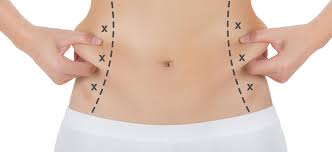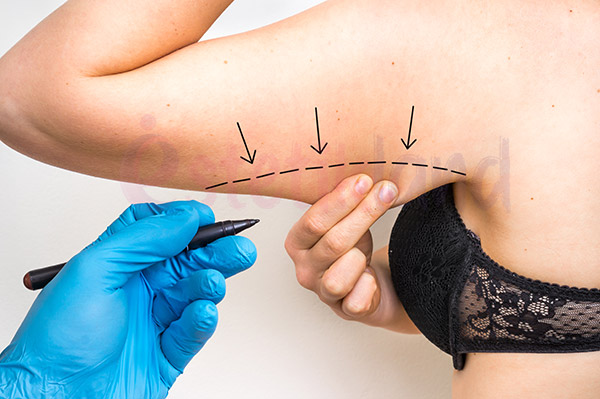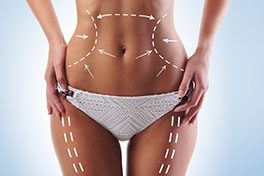estetikland
Updated on March 13th, 2024
Ana sayfa » Plastic Surgery » Liposuction
Liposuction is a preferred plastic surgery procedure to reshape body contours by removing excess fat tissue. In this article, basic information such as what Liposuction is, its techniques, how it is performed and in which areas it is preferred will be explained.
Liposuction involves the surgical removal of excess fat from the body. A thin tube called a cannula is inserted through a small incision in the skin, directed into the fat stores and connected to a vacuum device to suck out the fat. In this way, fat cells are removed from the body.
However, liposuction only acts on the layer of fat under the skin and above the muscles and does not remove visceral fat, the internal fat that surrounds and protects the internal organs.
Başlıklar
ToggleLiposuction, one of the earliest pioneers of which was performed by French surgeon Charles Dujarier in the 1920s, can involve various risks and potential complications, which can make the procedure dangerous. The scars from the small incisions made fade over time, but do not disappear completely, depending on the person’s skin type, the location and size of the incision, as well as the care and treatment processes.
Liposuction should be used for fat reduction and body shaping, not as a weight loss method. While the removed fat cells do not come back, the remaining fat cells have the possibility to grow and if the person does not maintain a healthy lifestyle, weight gain and new fat deposits are possible.
Therefore, a healthy diet and regular exercise after liposuction ensures that the results are permanent and is also important for overall weight control.
All these procedures are performed by plastic surgeons, aesthetic surgeons and some general and dermatologic surgeons.

This method, which is the classical liposuction technique, is the process of vacuum removal of fat. It is used to remove large amounts of fat, but it causes more bruising and has a longer recovery time.
It is a method that liquefies fat cells using laser technology. It is popular because it offers shorter recovery times. It can also help to tighten the skin.
A large amount of saline solution is injected into the area of fat to be removed. This allows the fat to be absorbed more easily and reduces the risk of bleeding. It usually offers a shorter recovery time.
Vaser liposuction is a technique that liquefies fat cells using ultrasonic waves and then removes this liquefied fat. This method is effective for removing dense fat deposits and working in tighter spaces.
Using water jet technology, it gently and effectively loosens the fat tissue and removes fat cells and tissue in the process. This method uses gentle pressure to facilitate the removal of fat.
This method uses a vibrating cannula to allow the fat to be removed more effectively and quickly. It requires the surgeon to work more precisely.
As can be seen, there are a wide variety of techniques, and traditional liposuction is the liposuction method that usually removes the most fat. Determining the most appropriate method can be possible with a detailed evaluation with an experienced plastic surgeon.

Liposuction is suitable for people who are in good general health and have reached their target weight, it is particularly effective in individuals who have been able to maintain this ideal weight for a long time.
The amount of fat that can be safely removed during liposuction is limited, and removing large amounts of fat can lead to serious health problems. For this reason, liposuction, especially in overweight people, may cause unwanted aesthetic results such as sagging skin.
Apart from aesthetic purposes, liposuction can also be used for some medical conditions. These include treatments such as Lipedema treatment, Lipoma removal, Gynecomastia treatment and Lymphedema.
Although there is no specific Body Mass Index (BMI) requirement for liposuction, it is generally preferred that people have a BMI below 30. This is important both to reduce health risks and to achieve better aesthetic results.
Since liposuction is a method designed to remove fat cells, it cannot alter the connective tissue structures beneath the skin surface and therefore cannot directly remove cellulite formation. Different methods need to be evaluated for cellulite treatment.
If the appearance of a wide chin is due to fat accumulation, liposuction can be effective to remove excess fat in this area and provide a clearer jawline.
Lipedema is a condition related to the abnormal accumulation of fat in certain areas of the body, usually including the legs and sometimes the arms. Liposuction for lipedema can be an effective treatment option to relieve symptoms and improve quality of life.
Liposuction is not recommended for general weight loss. It should be preferred to improve non-melting fat deposits and body contours.
Diabetes can affect the healing process and increases the risk of infection. Irregular blood sugar levels can slow wound healing. There may also be difficulties in blood sugar control during and after anesthesia.
It is a condition in which lymph fluid accumulates in the body as a result of a malfunction of the lymphatic system. This often leads to swelling and pain in specific body areas, such as the arms or legs. Lymphedema is a chronic condition and liposuction can reduce symptoms but not completely cure it.
Lipomas are usually harmless fatty tissue tumors and usually do not require treatment. However, it may be desirable to remove them because of discomfort or aesthetic appearance. In this case, surgical methods such as liposuction are used.
To reduce unwanted fat in the belly area, liposuction is used to absorb excess fat and reshape the body contour.
Liposuction is based on the principle of reducing the size of the breast by absorbing excess fat tissue. Liposuction gives more successful results in breasts with excess fat tissue. In addition to reducing breast size, it can also be used to correct asymmetry between breasts.
Gynecomastia is the abnormal growth of breast tissue in men. Liposuction can be used to reduce the excess in the breast area and provide a flatter breast contour. Liposuction alone may not be sufficient if the growth has also occurred in the breast tissue, that is, if it is not only due to an increase in fat tissue.
It is performed under local or general anesthesia. The surgeon makes a small incision (usually a few millimeters) in the area where the fat will be removed. A thin tube (cannula) is inserted under the skin. The cannula is used to draw out the fat with the help of a vacuum or syringe connected to the device, and through this tube the fatty tissue is sucked out. Once the fat has been removed, the incisions are closed with sutures or bandages. The patient can usually return home the same day.
In terms of safety and healthy results, the amount of fat that can be removed during a liposuction procedure is usually limited. In most cases, surgeons can remove up to about 5% of body weight in a single liposuction procedure. This usually corresponds to 3-5 liters of fat, but this amount may vary depending on the patient’s body weight and individual condition.

The liposuction procedure usually takes between 1 and 3 hours. Post-procedure swelling starts to decrease in the first few weeks, but it usually takes 3 to 6 months to see the full result. In some cases it can take up to a year.
Traditional liposuction or power-assisted liposuction is one of the methods where the most fat can be removed.
Fat in the inner thighs is reduced, making the legs look slimmer and more shaped. The outer thighs, sometimes called “cellulite”, are corrected, providing a smoother and more proportionate appearance. The contour of the upper thighs is improved, making the overall leg silhouette more aesthetic.
With liposuction, excess fat tissue can be removed from the buttocks area to create a firmer and more shaped appearance. This procedure is aimed at improving the contours rather than completely changing the shape of the buttocks.
A firmer and more shaped appearance is provided by removing fat stores in the upper arms.
It can also be used to remove excess fat from the lower back and the area under the ribs. It is the most commonly used area for fat deposits under the bra band, especially in women.
Liposuction can be applied to remove excess fat in the belly area.
It is especially applied to remove fat accumulated in the upper parts of the legs, knees and calves. With liposuction, the fat in the legs is absorbed in a controlled manner, resulting in a smoother and firmer appearance.
This adiposity is seen especially in the upper and middle parts of the back and is sometimes referred to by terms such as “backpack” or “bra back”. Liposuction is recommended for back fat that does not go away with diet and exercise.
The lateral part covers the side of the breast in the direction of the armpit, away from the midline of the body. This method may be particularly suitable for patients who have excess fat tissue but do not have sagging problems.
Liposuction is suitable for people with good skin elasticity and only excess fat. It does not tighten sagging skin. However, tummy tuck is performed to tighten sagging skin and loose abdominal muscles.
Liposuction in men is usually performed on areas such as abdomen, waist, back, breasts, neck and under the chin. It is a suitable option for those who want to define their body contours and achieve a more athletic appearance.
It combines radiofrequency energy with helium gas and turns this mixture into plasma. It is used to tighten loose or sagging skin on the face, neck, abdomen and other body areas.
It is a more precise and detailed version of liposuction. This procedure aims to achieve an aesthetic body shape by removing fat from specific areas of the body. Liposculpture is especially suitable for people who want to fine-tune their body contours and gain a more athletic appearance.
Ozempic is actually a diabetes medicine. Ozempic aids weight loss because the drug reduces appetite by regulating blood sugar levels and may also increase the feeling of fullness by slowing gastric emptying. It should not be considered as an alternative to aesthetic procedures such as liposuction without the advice and supervision of a doctor.
It is used to aesthetically reduce fat accumulations in the under-chin area known as “double chin” and permanently destroys fat cells in this area.
It destroys fat cells in certain body parts by freezing them. It is applied in various areas such as abdomen, waist, back, thighs, arms and under the chin. While cooling treatment damages fat cells, it does not damage the surrounding tissues. The dead fat cells are metabolized and excreted by the body over time.
The initial cost of liposuction in Turkey can vary between $4,500 – $6,000 on average. These fees vary according to the number of areas to be treated and the complexity of the procedure.
Postoperative oedema may develop for a few weeks after the operation. Therefore, it is necessary to wait for the oedema to resolve so that the results of the operation can be noticed in the early period. It may take up to the second month to reach the peak of the effects that gradually become apparent at the end of the first month.
Lipoplasty removes fat tissues permanently. Therefore, it is not possible for the fat tissue removed in the intervened area to recur after the operation, regardless of the conditions. However, new fat cells may form with very intense weight gain. Therefore, nutrition and weight control is essential after the operation.
Visceral fat is stored in the abdominal cavity. It is a dangerous and active type of fat because of its proximity to important organs and its effect on hormones. Liposuction is a procedure designed to remove only subcutaneous fat cells. Therefore, it is unfortunately not possible to remove visceral fat with this operation. The most effective and only way to get rid of visceral fat is to follow an exercise programme that accompanies a healthy diet.
Unfortunately, no. Problems such as cellulite and stretch marks do not develop due to adipose tissue. The source of such problems is related to skin elasticity and skin quality. Although the liposhaping procedure removes a certain amount of fat cells, it does not have any effect on your skin elasticity.
If the operation and pregnancy plan are close to each other; it is generally recommended to postpone the operation to the period after pregnancy. There is no harm in getting pregnant 6 months after the operation.
An important detail about liposuction operation, which is generally requested for cosmetic purposes, is that it can also be applied as a treatment in some cases. Although it cannot be applied in obesity patients; some anomalies occur in the bodies of people with morbid obesity after obesity treatment. In such cases, liposuction can be applied as a treatment. In Gynaecomastia seen in men, the patient can be relieved from pain and discomfort with lipoplasty. Gynaecomastia is a chronic or long-term condition, rarely seen in one breast, usually in both breasts, and the breasts are larger and fuller than they should be. It can be used in the treatment of lymph oedema, a condition of accumulation of lymph fluid, usually seen in the arms or legs. Lipomas, which are benign fat tumours, can be removed by liposuction. Lipoplasty can also be applied in the treatment of lipodystrophy syndrome, which is among the rare health problems. Lipodystrophy syndrome is the complete disappearance of fat tissues in one part of the body and excessive fat accumulation in another part.
Updated on March 13th, 2024